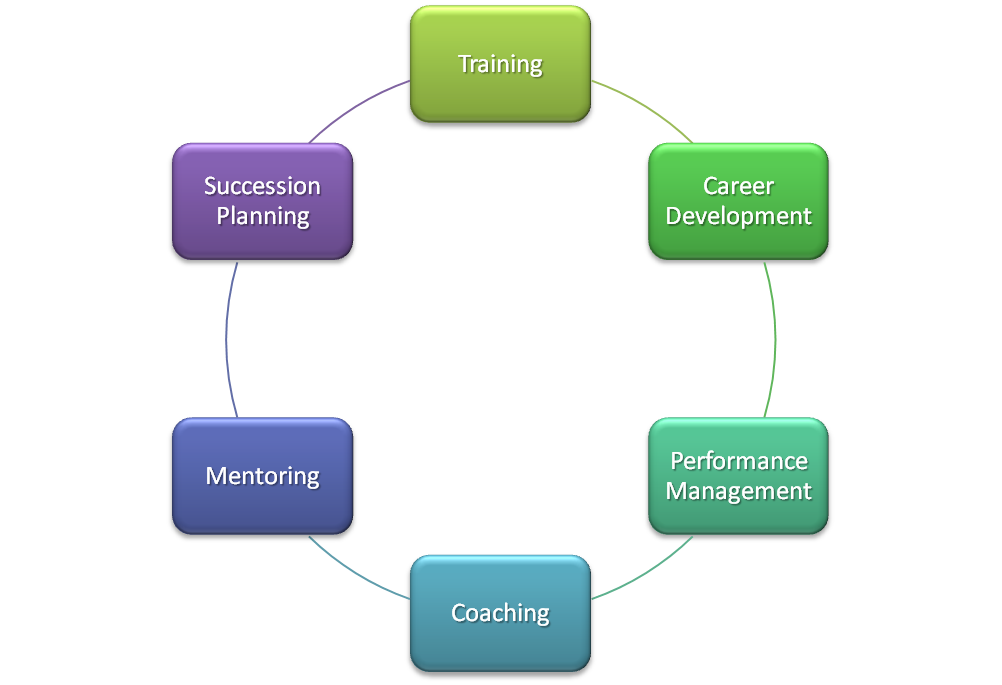Most of my experience is on the HRM side but as I mentioned in my introduction I've also dabbled on the HRD side. HRM tends to appeal to those right brained folks such as myself. It's generally more creative in nature, especially in the training function. HRD on the other hand is more appealing to left brained individuals - those that like to deal with numbers, procedures and processes that don't deviate much from the norm. Of course this is just my observations based on my experience.
Human Resources Development
According to BusinessDictionary.com, Human Resources Development is "the part of Human Resource management that deals with training and development of employees." Some in the industry call this the "soft" side of HR. Personally, I think this is the 'fun' side of HR. Unfortunately, many organizations consider most if not all functions of HRD as unnecessary or "fluff." Oftentimes these functions are the first to go during budget cuts. It's interesting to note however that most employees see these functions as very important when considering applying for a job or staying with their current company. But, that's a topic for another post.
Below are the high level basic functions that fall under HRD:
 |
| Priscilla R. Lish Consulting Services ©2015 |
Human Resources Management
BusinessDictionary.com defines Human Resources Management as "the process of hiring and developing employees so that they become more valuable to the organization." This part of HR deals with managing the logistics of finding employees, hiring them and making sure they add value to the organization. Below are the basic functions that fall under HRM:
 |
| Priscilla R. Lish Consulting Services ©2015 |
Other Functions of Human Resources
There are several other functions that typically fall under the HR organization that don't necessarily fit tightly into HRD or HRM models. These include:
- Organizational Development
- Employee Engagement
- Change Management
- Employee Communication
- Compliance & Legal Requirements
- Workforce Planning
- Payroll
- Metrics and Reports
- Safety
- Recognition
In my experience some of these functions have been known to reside in other departments such as Finance, Marketing, Strategic Initiatives and others. In my opinion anything and everything that has to do with an employee should fall within the HR organizational strategy. This is the best way to mitigate misunderstandings, inconsistencies in administering policy and redundancies that often create frustration in employees.
There are several great sites that offer detailed information on the various functions of Human Resources including:
The Society for Human Resource Management (SHRM) - Some information requires membership, but there is quite a bit of free information available on the site.
A must to insure your company is operating fair, square and legal as it relates to employment laws.
Over the next few months I will post more detailed information on each of the functions. Until then .... let me know what you think.
